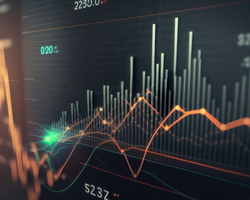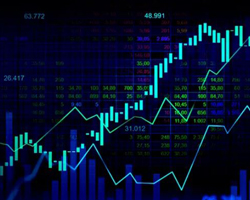An Introduction to Forex Technical Analysis
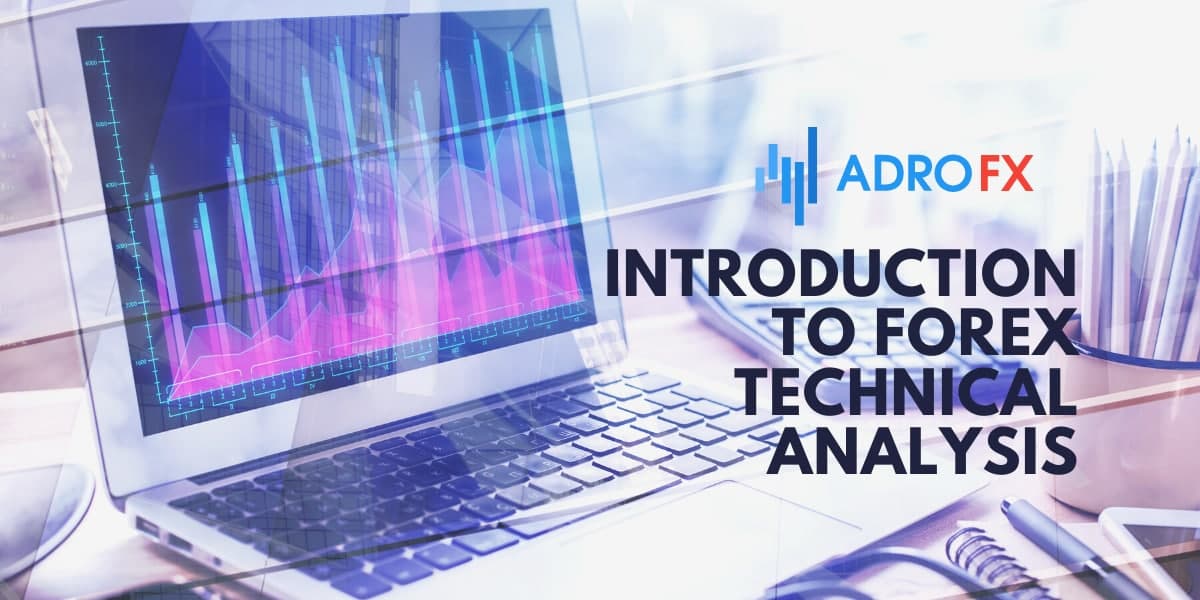
There are thousands of ways to benefit from Forex. And while, on the one hand, this sounds slightly frightening, what it really means is that absolutely anyone can find a suitable way to capitalize on currency trading. For some, Forex is all about meticulous analysis of all contributing factors, such as economics, politics, and the origins of each new trend. Others, however, are perfectly satisfied with basic and straightforward bits of data. And both are correct. After all, does it really matter how much you know and what methods you use if you are striving?
But even the most rudimentary Forex approaches require both knowledge and skill. Many beginners often hesitate to face the sheer amount of information to go through. The good news is that as long as you tackle your learning one step at a time, you’ll have no trouble navigating through the seemingly complex world of financial markets. Today, for example, we are taking an in-depth look at one of the irreplaceable components of successful trading—Forex technical analysis.
Below you will find anything there is to know about technical analysis on Forex, including the method’s origin, analog solutions, tools, techniques, and a lot more. So, buckle up and let’s dig in.
What is Technical Analysis?
First things first, what is technical analysis for Forex? In order to make a trade, you first need to decide on a couple of things. Namely: which currency pair you are planning to work with, and what is your position on that pair going to be. Choosing the currency is a matter of either going with the flow and betting on the biggest players such as USD/EUR or GBP/JPY or giving the preference to your local coins paired up with one of the major ones. But how do you know in which direction you should head? That’s what the analysis is for.
To open a trade, the trader has to outline the size of the position, the entry and the exit points. Accomplishing these parameters comes from looking at the market from a certain perspective, that is—analyzing it. There are roughly four categories of Forex market analysis: technical, fundamental, quantitative, and sentiment. While each of these builds on a set of very distinct principles, it is common to combine analytical approaches to observe a bigger picture. Here is a brief overview of each analytical method:
- Technical analysis for Forex is focused on price evaluation. Technicalists consider the price of the asset a comprehensive collection of data that can be used to make a trading decision by building assumptions. Technical analysis techniques typically involve a range of mathematical concepts and pre-designed calculating tools.
- Fundamental analysis looks beyond the dry data and tries to find the root of each market tendency. The fundamental devotees look at factors such as economic reports, political events, social trends a lot more. The general idea is that everything on Forex happens for a reason, and in order to gain income, you need to know what that reason is.
- Quantitative analysts utilize many similar tools and techniques as technicalists. However, they do not use the data to build future predictions. Instead of calculating a price movement trajectory or looking for the fundamental origin of each trend, the quantitative analysis uses statistics to calculate the probability of each particular move at a specific moment. Through this approach, the trader is able to make a decision on-the-spot without looking too far back or too far ahead.
- Sentiment analysis is a subcategory of fundamental analysis and a complete opposite of the quantitative approach. While quantitative analysts completely disregard the emotion and confidently move against their gut if data suggests otherwise, sentimentalists ride the waves of collective subjective impressions. For example, when the majority of traders are rapidly moving in a unified motion, you can say that this is how the market ‘feels’ or, in other words, what is the market’s sentiment.
Choosing the analysis approach depends on a lot of factors, including the trader’s personal preferences and availability. It is important to know that there is no one right answer, and you are free to combine the methods and techniques according to your liking, as long as it works, and you remain financially successful. Next, let’s take a closer look at the specifics of technical analysis in Forex, starting with where it originated.
The Origins of Technical Analysis
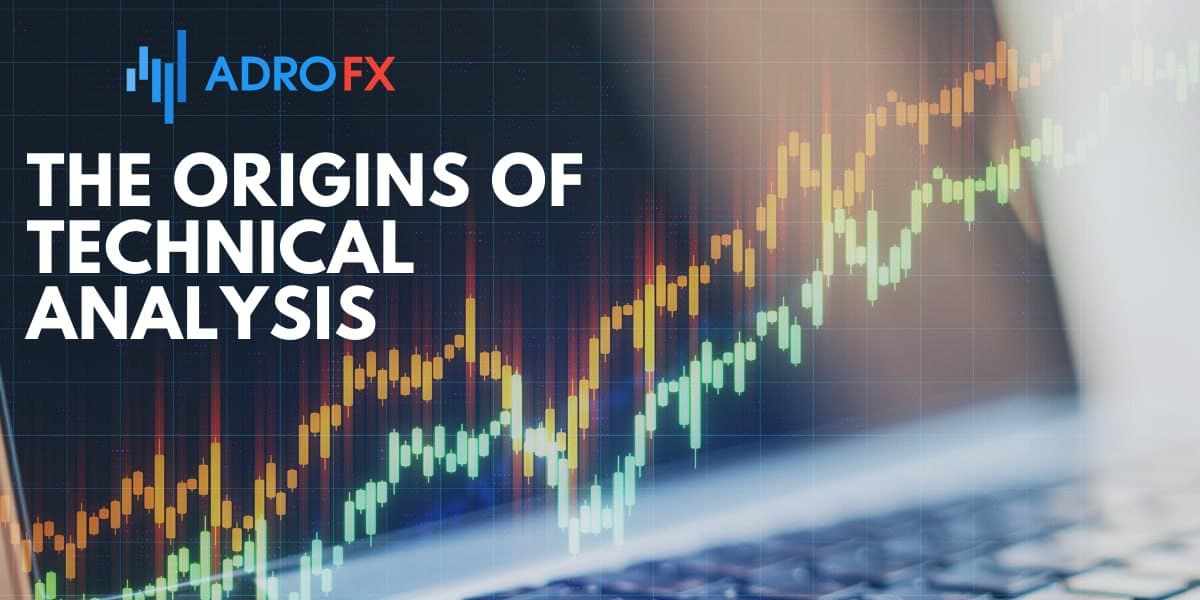
As mentioned above, technical analysis in Forex and pretty much any other market is based on the belief that price contains all the crucial information for making an effective decision. This way of thinking tracks back to a theory by Charles Dow, a 19th-century journalist and founder of the famous Wall Street Journal. While the Dow theory has multiple levels and angles, it essentially states that no matter what caused the price to be what it is, the number is all that matters. Due to this assertion, technical analysts often suggest that considering too many fundamental factors can cloud the trader’s thinking through controversial conclusions.
Another main aspect of Dow’s notion is that prices move in trends. Like anything else in our universe, each market movement will come to an end sooner or later. Whenever you look at the chart, you will observe a balance of upward and downward swings. The chart is almost never harmonious—some elements are more evident than others. Consequently, some trends last for months, while others are over right after they started. The job of a technicalist is to outline and categorize the trending movements. Once the trend is indicated, all you have left to do is to arrange your trades according to that indication. This way, if you are expecting the price to continue moving up, for example, you will consider buying low now to sell high later.
Finally, Forex technical analysis is a study of patterns. Because the currency price movement has been tracked for so long, the traders have come to an observation that charts tend to repeat themselves. For instance, extensive periods of down movement are followed up by proportionally long uptrends. This logic is perfectly applicable for trading in any time frame. While position traders will look at the larger chart patterns and build their action plan months ahead, a day trader can look at the specific configuration of one-hour candles to make a desirable move.
So far, the technical analysis for Forex appears as the most comprehensive solution for currency trading. Yet, so many traders worldwide strongly prefer fundamental principles. Why is that?
Fundamental Analysis vs Technical Analysis
Both fundamental and technical analytical approaches have substantial reasons to exist. As you probably already understood, it is mostly a matter of preference. However, in order to choose a preferred method, you need to first understand how each of them might apply to your particular case. To assist you in this, we’ve gathered some of the most notable advantages and disadvantages of the fundamental and technical analysis on Forex.
Advantages of Forex technical analysis
- Technical analysis in Forex is great for all levels. You don’t have to be a financial guru to successfully apply technical principles right away.
- You can learn the basics of technical analysis relatively fast and begin to benefit from Forex in a matter of weeks.
- As you progress on your Forex journey, you can adjust the levels of complexity and depths in your analysis. The combination of advanced analytical skills and real market experience is usually the foundation of noteworthy trading success.
- The majority of tools required for Forex technical analysis are available for free with the platform. What’s more, most reputable brokers assist their clients by providing daily technical scopes for the central currency pairs.
- When done right, technical analysis results in a very straightforward action plan that does not require a lot of additional corrections, especially in the short run.
Disadvantages of Forex technical analysis
- The technical analysis calls for precision. Sometimes a single decimal point plays a tremendous role in how the trade plays out, which can add up to the trader’s stress level.
- Sometimes technical data is not enough. During the external events that are bound to affect the market, such as the presidential election or global pandemic, it is crucial to consider fundamental factors in the decision-making process.
- When it comes to technical analysis on Forex, the beginners might struggle from a lack of experience. Unless you studied all possible patterns and theories, which is nearly impossible, there is a chance you’ll come across an unfamiliar scenario rather quickly. Luckily, you can always opt-out of trading at that moment and take some time to grow your knowledge base.
Advantages of Forex fundamental analysis
- Fundamental analysis has a long history of proving itself effective. The currencies essentially reflect the economic stability of their holding nations, so taking a close look at what happens within the country makes total sense. For example, evaluating a specific country’s export data can give you an idea of how much the currency might end up costing after the international trade agreements are finalized.
- Traders are free to choose from a wide variety of angles and factors to consider. Having a distinct opinion backed up by knowledge and facts pays off generously in fundamental trading. This is an excellent asset for financial professionals who have a sufficient level of expertise to predict the upcoming market conditions.
- Fundamentalists who implement several basic Forex technical analysis principles are practically unbeatable when it comes to judging the market’s state. In fact, one of the most successful Forex traders of all times, Bruce Kovner, once said: Fundamentalists who say they are not going to pay any attention to the charts are like a doctor who says he’s not going to take a patient’s temperature”.
Disadvantages of Forex fundamental analysis
- The variety of angles in fundamental analysis is both a pro and a con. While expert traders can easily navigate among the ocean of factors to consider, the beginners can simply drown. This mainly means that fundamental analysis will work best after you gain some trading experience and get to know the market.
- Forex fundamental analysis can be very time-consuming. Finding a reliable data source and correctly translating the info into the financial trading principles might take anywhere from a couple of hours to a couple of days. And time is precious.
- Lastly, fundamental analysis is incredibly subjective. Simply said, no matter what side you take, you can always be wrong. And while this is true for any analytical approach out there, fundamental misjudgment hits the hardest.
The Basics of Forex Technical Analysis
At this point, you have a good general understanding of technical analysis on Forex. You know that it is relatively easy to master and just as effective as any other approach. Now, let’s continue this introduction by exploring the basic elements of successfully applying technical analysis principles in your trading, starting with choosing the right software.
Choosing The Best Technical Analysis Software
Despite numerous available solutions for technical analysis in Forex, you only really need one tool. And that is your trading platform. By design, trading platforms are gateways to the market: you use them each time you need to open and close a trade. However, modern platforms do a lot more than just that. With the help of dozens of built-in instruments, you can use your trading terminal to analyze the market, build predictions, set up automatic commands for the times when you cannot attend to the market yourself, and so on.
Considering the role trading platforms play in everyday trading life, choosing the right one is beyond crucial. And the main challenge here is to pick out the truly attention-worthy gems in the sea of options. The good news is that some platforms stand out more than others, making your search a bit easier. One of those is the broadly acknowledged Metatrader 4 (MT4).
MT4 is a number one choice of many brokers and traders alike, and there is not too much surprise there—it’s both easy to use and sophisticated enough to perform advanced tasks. The interface structure is usually a make-or-break factor in the platform selection process, and according to experienced traders, MT4 hits every spot. Whether your goal is to take a brief look at the chart or build a multi-leveled, long-term strategy—you’ll find everything you need conveniently gathered in one place. Not to mention, MT4 comes for free with most established brokers, making it an equally easy and most effective solution.
Technical Analysis Charts
The chart is the active map of price movement on a chosen time scale. Since technical analysis for Forex focuses primarily on the price itself, a chart is going to be your main instrument in the decision-making process. Depending on your requirements and the overall strategy, you will need to select a suitable set-up in two categories: timeframe and type.
Timeframes in MT4 range from one minute to one month and differentiate by the amount of data they feature. This way, each element of the minute chart will represent the price movement over a sixty-second period, while on a daily chart, each piece will reflect one hour. Depending on a strategy you go with, you will have a specific timeframe to build your trades on. But when you are analyzing the market and trying to confirm your assumptions, switching between several frames is very common. Some strategies specifically call for a combination of two or more time setups.
And as for the chart type, there are three most commonly used ones: line, bar, and candle. The charts mainly differentiate by the type and amount of information they carry, which also reflects in the visualization. All traders usually divide into two camps—bar and candle, depending on their trading style and individual preferences. And line charts are utilized by both trader categories as a way of looking at a bigger picture. Here are the basics of all three chart types:
- The line chart is a minimalistic representation of price that consists of a graph connecting specific price values over the set time period. By default, the line chart is set to showcase closing prices. However, you can change the value to open, high, or low to evaluate the market movement from the required perspective. Line charts are great for observing trends as well as for identifying chart patterns, which we will discuss further on.
- Bar charts are slightly more complicated, as they carry more data in every element. The generic bar looks like a stick with two horizontal dashes on each side. The top point indicates the prices high for the period, and the bottom one—low. And the twigs are representing the open and close prices, with open on the left and close on the side. Barcharts have enough data for comprehensive Forex technical analysis, and therefore act as one of the main chart types across the market.
- Candlestick charts are perhaps the most recognizable ones in the mass culture. Every element of the chart is a vertical rectangle that resembles a candle, usually with vertical markings on top and the bottom. Unlike the bars, candles can vary in length and sometimes have no body at all. The same applies to the markings, referred to as shadows or wicks—they can be very long or absent, depending on the market data. The shadows indicate the highest and lowest prices within the period. As for the open and close, the higher one will be on top. This way, we can separate candles into bullish and bearish, bullish being the ones with a close higher than the open, and bearish—vice versa.
Technical Analysis Chart Patterns
You already know that technical analysis on Forex is largely based on the idea that price movement runs in loops and patterns. Logically, spotting those patterns and using them for your advantage is the general. When you are just starting, every chart will look chaotic and confusing. However, as time passes, you gradually begin to see the order in the way charts form and pick up on certain characteristics.
The typical approach to outlining chart patterns is by drawing or imagining virtual lines on the chart, which seems to keep the price in a certain range. These lines are known as support and resistance, and their formation is yet another proof of technical analysis for Forex being effective. As the price moves from one extreme to another, it will create distinguishable shapes, such as vague M’s or W’s. Those formations are the patterns you are looking for. Don’t worry, you do not have to invent a bicycle here, as most patterns have already been discovered and described before. Your task is to get familiar with as many patterns as possible and practice noticing them on the charts. By doing so, you will have a general understanding of what might happen next and act accordingly. It’s worth mentioning that although chart patterns can be found on any chart type, they are the most evident online charts.
Technical Analysis Candlestick Patterns
Candlestick patterns build on the same principle as the chart patterns—as the price forms, it leaves an imprint on the chart, only now with the candlesticks. The candlestick pattern can consist of as little as one candle and will feature a very distinctive form. There are dozens of candle patterns out there, and it can be a bit overwhelming at first to get comfortable with confidently recognizing each one. Luckily, most candle formations have easy-to-remember names that directly reflect in their appearance.
The candles are shaped in accordance with the volume of bulls and bears in the market. In other words, each candle looks the way it does, depending on what sort of transaction is gaining the most momentum at the time. This way, for example, when the majority of traders are buying, the price will likely go up, creating noticeable bullish candles in the process. Based on the form a candle takes as well as on its location on the chart, the pattern can be used to either signal or confirm trend continuation, reversal, or neutral movement. To give you a sneak peek into what candlestick patterns might mean, here are three common examples:
- Doji candles resemble plus signs and appear when the opening and closing values are practically the same. The lengths of the wick and shadow may vary, reflecting the levels of pull from the bears and bulls. The longer the wicks shadows, the higher is the pressure from either or both sides of the market.
- Hanging Man is a small-bodied candle with an insignificant wick and an extremely long shadow. This single-candle pattern can indicate a bearish push in the middle of an ongoing uptrend.
- Three Soldiers are three large bullish or bearish candles appearing one after another. Three White (Green) Soldiers will form one higher than the prior, and Three Black (Red) Soldiers—one lower than the prior. The White Soldiers might signal a beginning of an upward reversal when located at the bottom of the chart, while the Black Soldiers at the top suggest that the price will begin to go down.
Technical Analysis Indicators
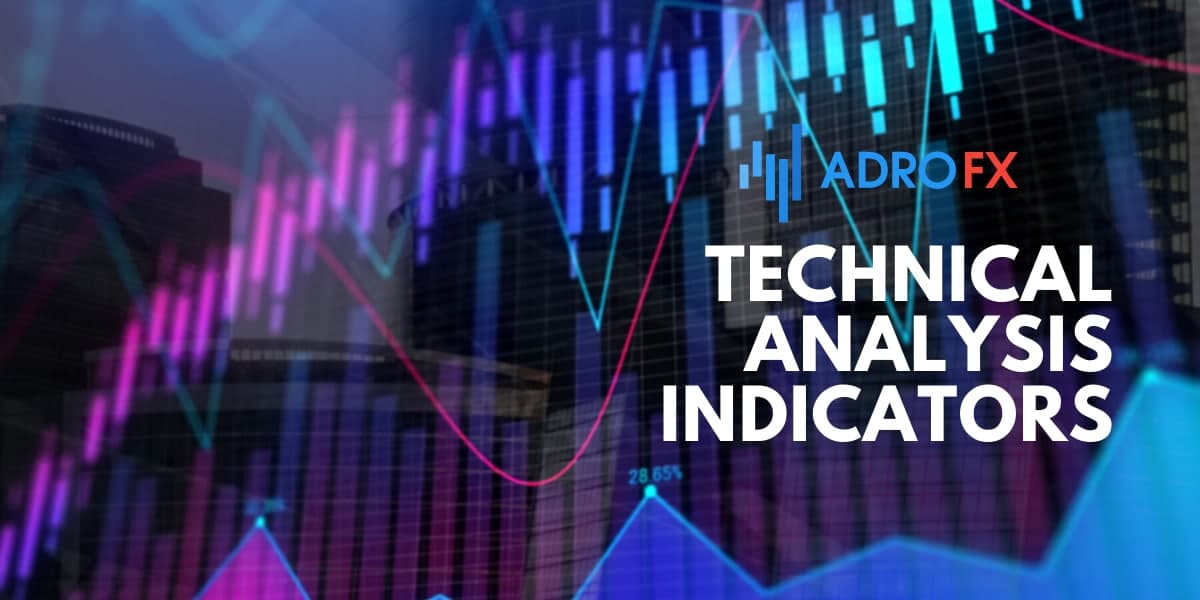
As you can see, the charts on their own can carry tons of information and act as the foundation for in-depth technical analysis on Forex. In fact, a lot of traders prefer their charts to be empty, without any additional elements of build-ups. This approach to trading is called the price action method. But if you do need a hand comprehending the chart, you might consider using one of the many technical indicators.
The indicators are pre-designed tools built into your trading platform. Their job is to help you analyze the market info by measuring a variety of factors. There are hundreds of indicators featured across different MT4 adaptations, with just about fifty of them playing a central role. All indicators can be roughly divided into four categories: trend, momentum, volatility, and volume.
- Trend indicators measure the strength of each particular trend by averaging the price values within it. The most popular Forex trend indicators are Moving Average (MA), Moving Average Convergence Divergence (MACD), and Parabolic Stop and Reverse (Parabolic SAR). All of these are used to identify, confirm, or predict a trend and build the trading process accordingly.
- Momentum indicators calculate the speed of the price movement by comparing the price values at different moments of time. The divergences between the price values and the speed of their formation usually point out to an upcoming reversal. The commonly implemented momentum forex indicators are the Average Directional Index (ADI) and Relative Strength Index (RSI).
- Volatility indicators calculate the rate of price fluctuations while ignoring their direction. Such calculations can help you project the reversal points further into the chart. The best examples of Forex volatility indicators are Bollinger Bands (BB) and Average True Range (ATR).
- Volume indicators measure the strength of a particular trend or confirm the trading direction by averaging the raw volume. The stronger the trend—the higher is the volume, and vice versa. Some of the best Forex volume indicators are Chaikin Oscillator, Volume Rate of Change and On Balance Volume (OBV).
Learning Technical Analysis with AdroFX
You already know so much, and it is time to get this knowledge working for you. But just before you go on to the actual market, why not take some time practicing in a risk-free environment? That’s right, by opening a demo account with AdroFX, you can learn twice as fast and test each new skill without investing any funds. Demo accounts perfectly simulate the real trading experience and give you an idea of what works best for you. Don’t waste any time and combine the learning with a hands-on trial by opening a demo account today for free.
Technical Analysis for Different Financial Markets
Before we wrap up, it is worth mentioning that technical analysis is equally effective across all markets. In fact, before technical principles were applied to Forex, they were widely implemented by stock and share traders. This way, as long as you have mastered the technical analysis for Forex, you won’t have any trouble transitioning to a different asset class and using the same techniques to make your trading and investing decisions. Just keep perfecting your analytical skills and feel free to experiment.
Trade Using Technical Analysis with AdroFX
Ready to turn your Forex technical analysis knowledge into financial gain? Go ahead and open a trading account with AdroFX. Best rates, sophisticated tools, an always-ready to help team, and an extensive base of constantly updated learning materials—we’ve got everything you need to become a successful currency trader in no time.
